Amaryllises are popular flowers for the holidays. They start appearing on store shelves in gift and growing kits in the fall when the holiday displays go up. They make great gifts for houseplant and gardening enthusiasts, but they are also popular as alternative (or complementary) Christmas and New Year’s decorations.
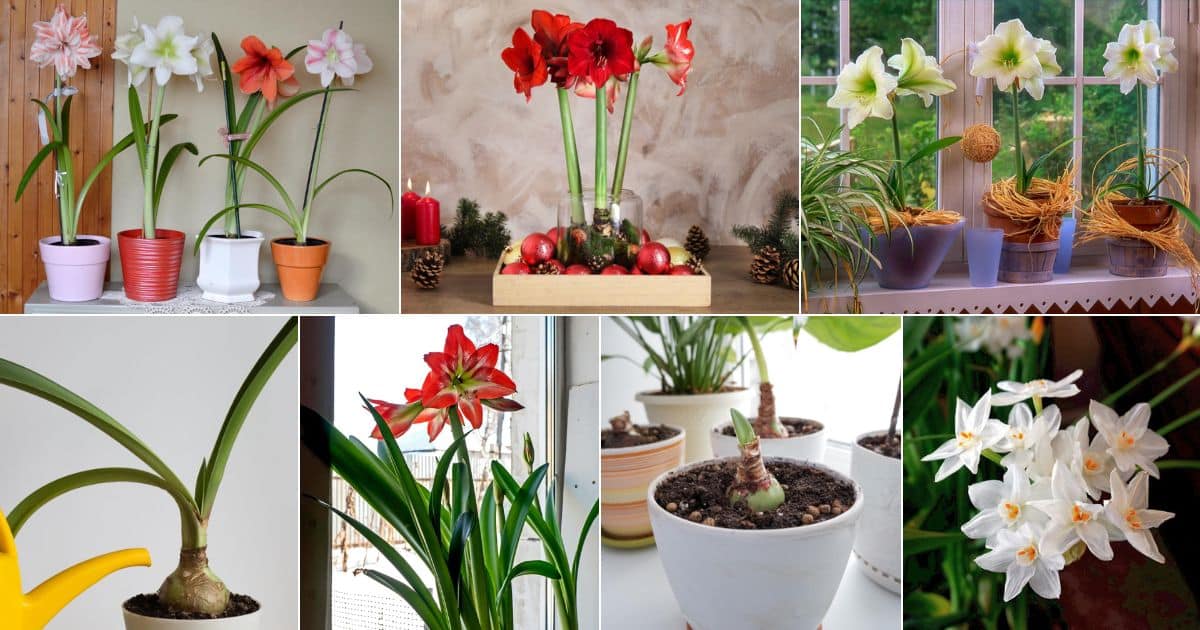
If decorations and displays are what you’re after, and you want to have your amaryllis blooming for holiday decorating, you’ll need to plan ahead and plant ahead.
When Do You Plant Amaryllis for Christmas Blossoms?
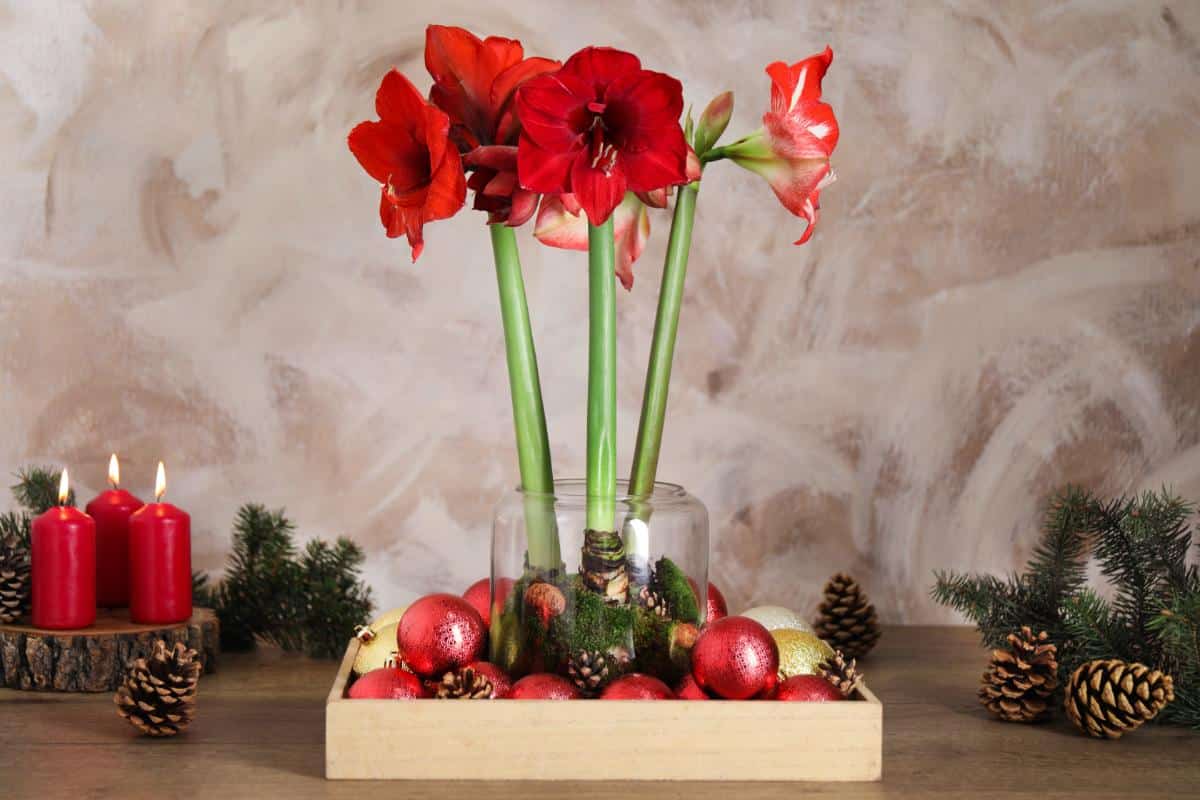
Amaryllis grow quickly and can flower anywhere between four to eight weeks after they are planted. The average is around six weeks. It’s wise to start planting in early to mid-November if you want the plant to be flowering for Christmas.
Here are some tips for a successful blooming planting:
- Amaryllises need to feel a root or pot bound to the flower. Plant your bulb(s) in a pot no bigger than one inch larger than the bulb (measured at the widest point of the bulb)
- The pot should be twice as tall as the bulb so the roots have enough room to grow
- It’s important that the pot has drainage holes
- Plant in a good quality potting mix
- An amaryllis planting kit should have all you need to start the bulb and the pot will be the right size
- The bulbs should not be completely covered—about one-third of the bulb’s top should be sitting above the soil
- When you first plant your bulb, take it to the sink and thoroughly water the plant until the soil is wetted all the way through
- Leave the pot in the sink for an hour or so to allow all excess water to drain, then put the pot on a saucer and move it to a place with bright, indirect light
- Do not overwater amaryllis bulbs
- Let the top of the soil dry out between waterings.
- Amaryllis prefers a cooler room over a warmer room (around 65 F or 18 C)
Plant More than One Bulb for More Reliable Blooms
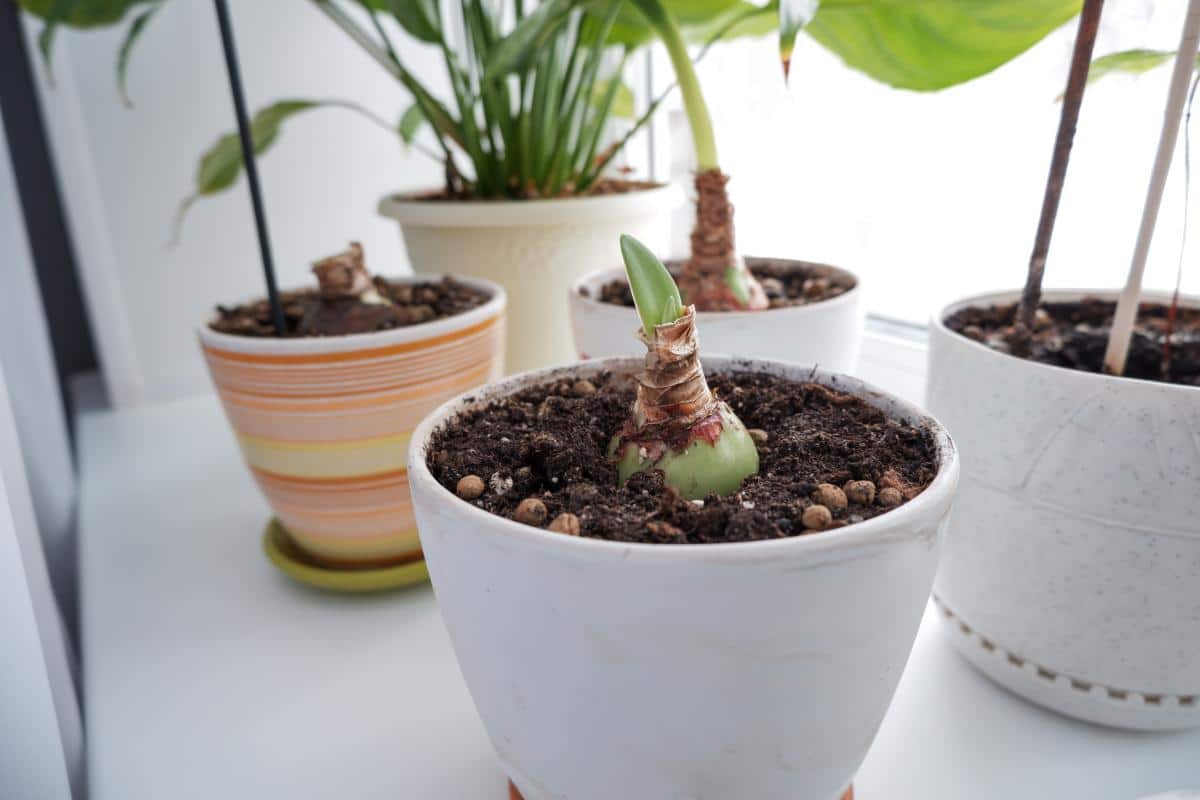
Each amaryllis blossom will last for about two to three weeks. And of course, we can plan the best we can, but everyone’s growing conditions are a little different in their home, and plants will do what each individual plant naturally does.
Doing what comes naturally, of course, means the bulbs can have a little bit of a mind of their own. If you really want to hedge your bets for blossoms for Christmas (and potentially through New Year’s), plant more than one bulb.
- The number of flowers that one bulb grows is related to the bulb size
- Choose larger bulbs for more flowers
- Flower stalks may also grow and bloom successively, so large bulbs with more flower stalks also increase the chances of having flowers for the holidays
Plant in Succession to Hedge Bets for the Right Bloom Time
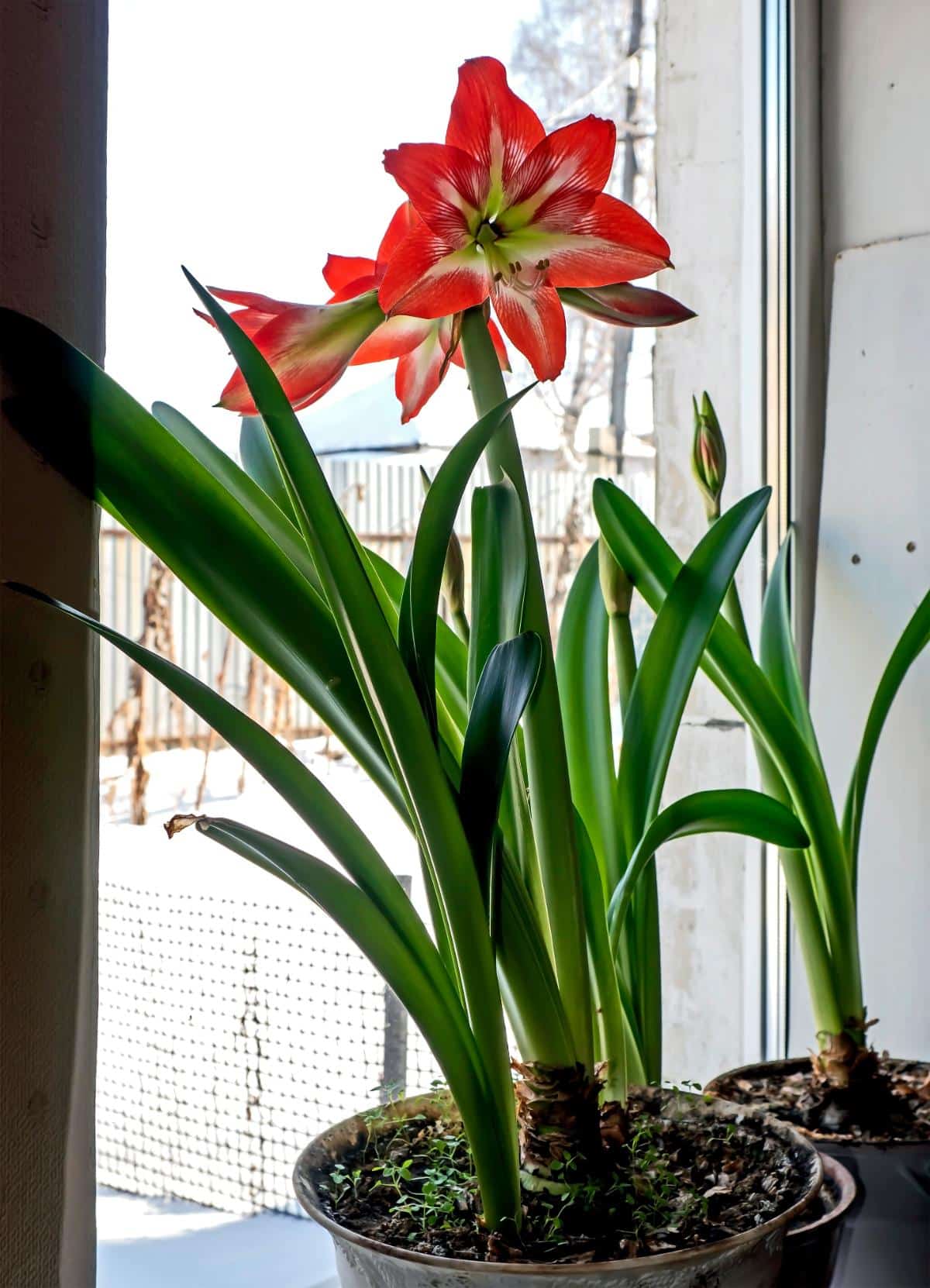
Another way to increase the likelihood of having your amaryllis bulb blossom when you want it to is to plant a few bulbs in succession.
Plant one or more bulbs every week or every two weeks. If you choose to do this, start earlier than November—mid to late October—and plant weekly or biweekly through the month of November.
At the very least, you’ll have a long succession of blooms to enjoy over many weeks. If you plant every week, you have the best chance of hitting the holidays just right.
If you plant every two weeks, you should have at least one flower in bloom consistently for as many bulbs as you started. That could mean well over a month of beautiful blooms!
- Amaryllis bulbs can be on the more expensive side, but with good aftercare, your bulb can bloom again
- Kits make planting easy, but you often can’t inspect the bulb in kits
- Bare amaryllis bulbs are cheaper, and you may be able to pick through to find the best (if you’re buying in person at a garden center or store)
- You can usually get two blooms per year; then the plant needs to die back from its foliage to store energy to grow again
- You can just be done with the plant after the first bloom and let it go dormant if you don’t care to manage it that much
Plant Different Varieties to Increase the Odds
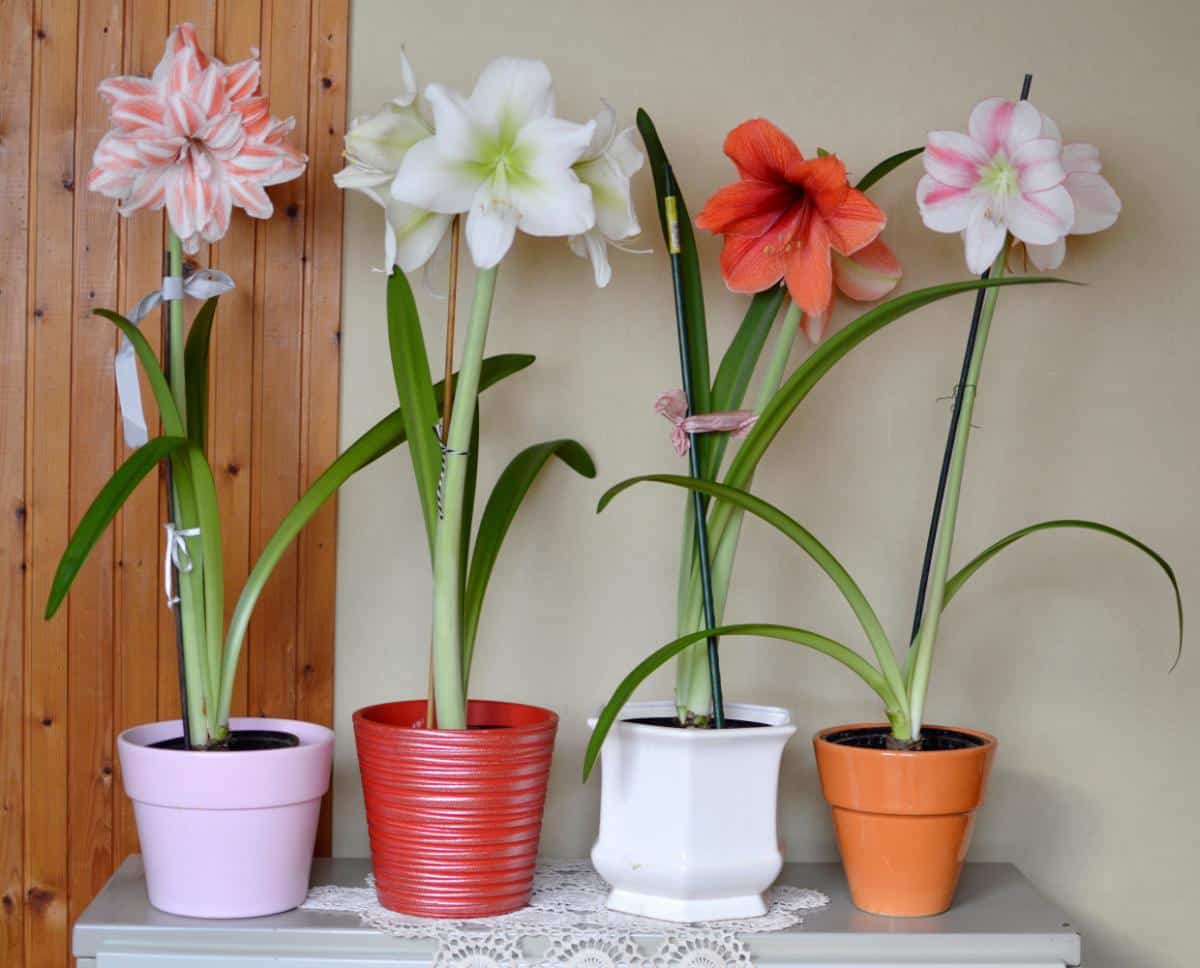
Different varieties of amaryllises have different growing and bloom times, so you can increase your chances of having blossoms on Christmas Day (or New Year’s Day, or both) by planting more than one variety.
Pick out a few that strike your fancy.
- Amaryllis bulbs can be put into dormancy after they die back
- You can save them and regrow them for many years
- You will have the widest variety of flowers by shopping for single bulbs and not kits
Fertilize Regularly to Boost Blooms
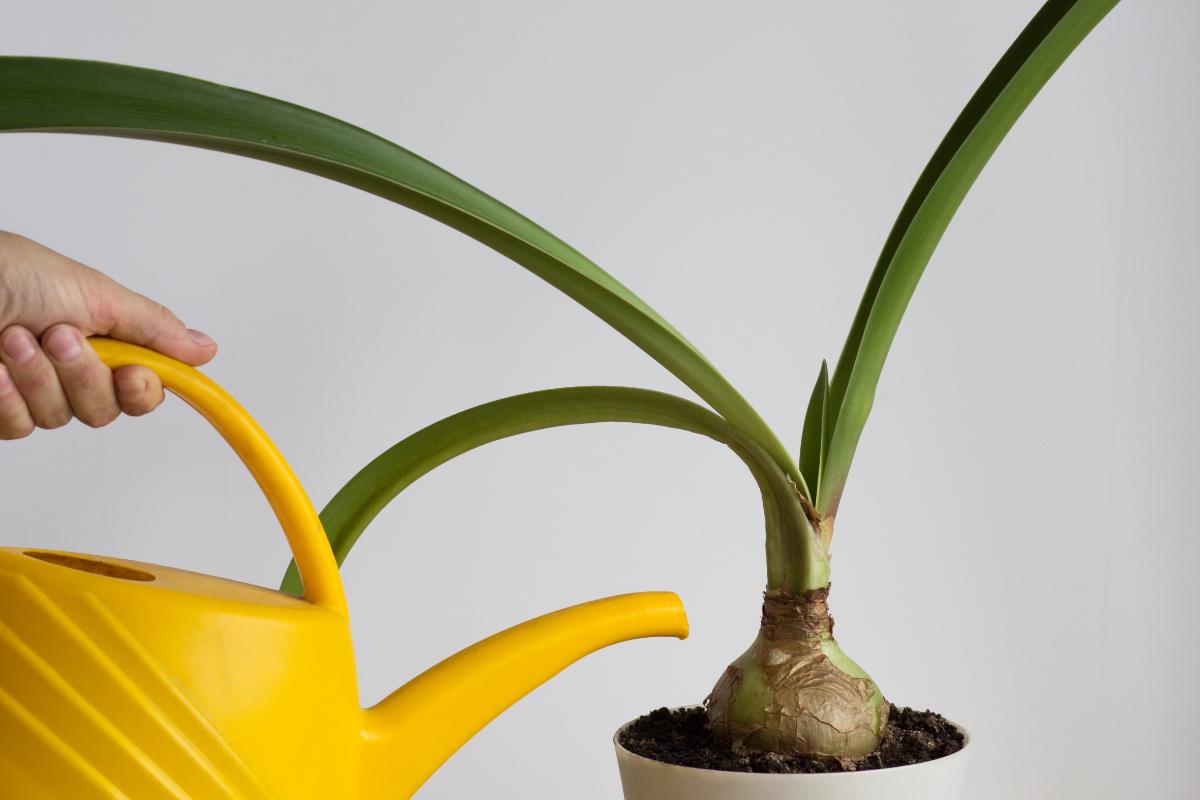
To speed up blossoming and give the plant what it needs to support those large flowers, fertilize your amaryllis every time you water it.
Start giving the bulb fertilizer in its water when you see new green growth poking out of the bulb (some bulbs come already sprouting, so fertilize those when you pot them—flowering takes a lot of energy out of a plant).
Even newly purchased amaryllis bulbs should be fertilized.
- Use a water-soluble fertilizer
- Phosphorous is what promotes blossoming in amaryllis, so choose a fertilizer with a high phosphorous content
- On the fertilizer label, phosphorous (abbreviated as “P”) will be the middle number
- For example, if the label has three numbers like 15-30-15, the middle number is the phosphorous content—the 30
- Phosphorous content should be at least as high as the other two, preferably higher
- Mix the fertilizer at half the strength recommended on the label and feed it every time you water once the plant starts growing
- Do not overwater amaryllis, or the bulb will rot
- Only water when the top inch of soil is dry
- Avoid pouring water on the neck of the bulb (the exposed part above the soil)
A Few Final Tips to Keep Amaryllis Looking Lovely
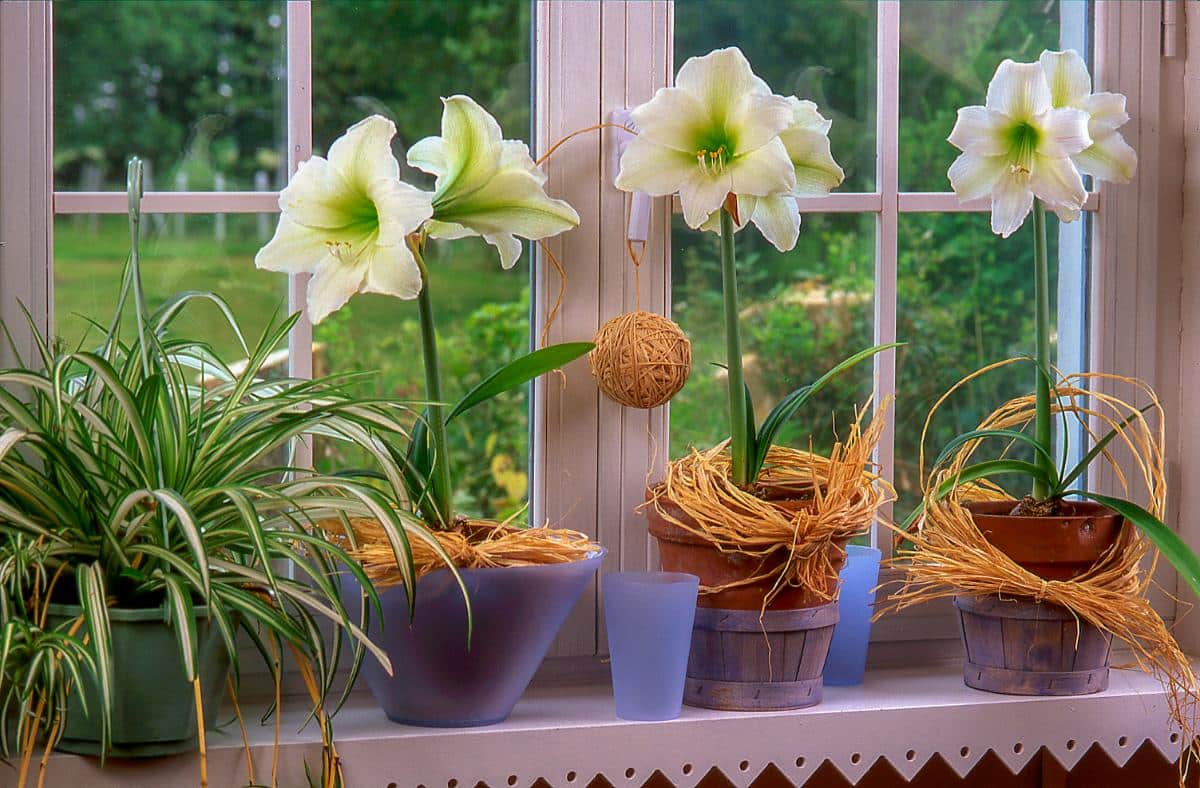
- Amaryllis grow quickly and bend toward the light, so turn the bulb every day or two, so it grows evenly and straight up
- Stalks are tall, and flowers are heavy—they can be anywhere from four to ten inches in diameter
- You may need to stake the flower stalk to keep it from bending
- Give your amaryllis a pretty topiary look by gently tying or wiring the flower stalks together at the top
- Tying also helps the stalks support each other
- You can tie flower stalks together on the stake, too, which hides the stake and lends support
- Sellers are now offering unique waxed amaryllis bulbs that are ready to grow and require no watering–an interesting option!
- Amaryllises make great gifts—give kits or start some ahead to give as grown and flowering plants
- A beautiful, blooming amaryllis is the perfect holiday hostess gift
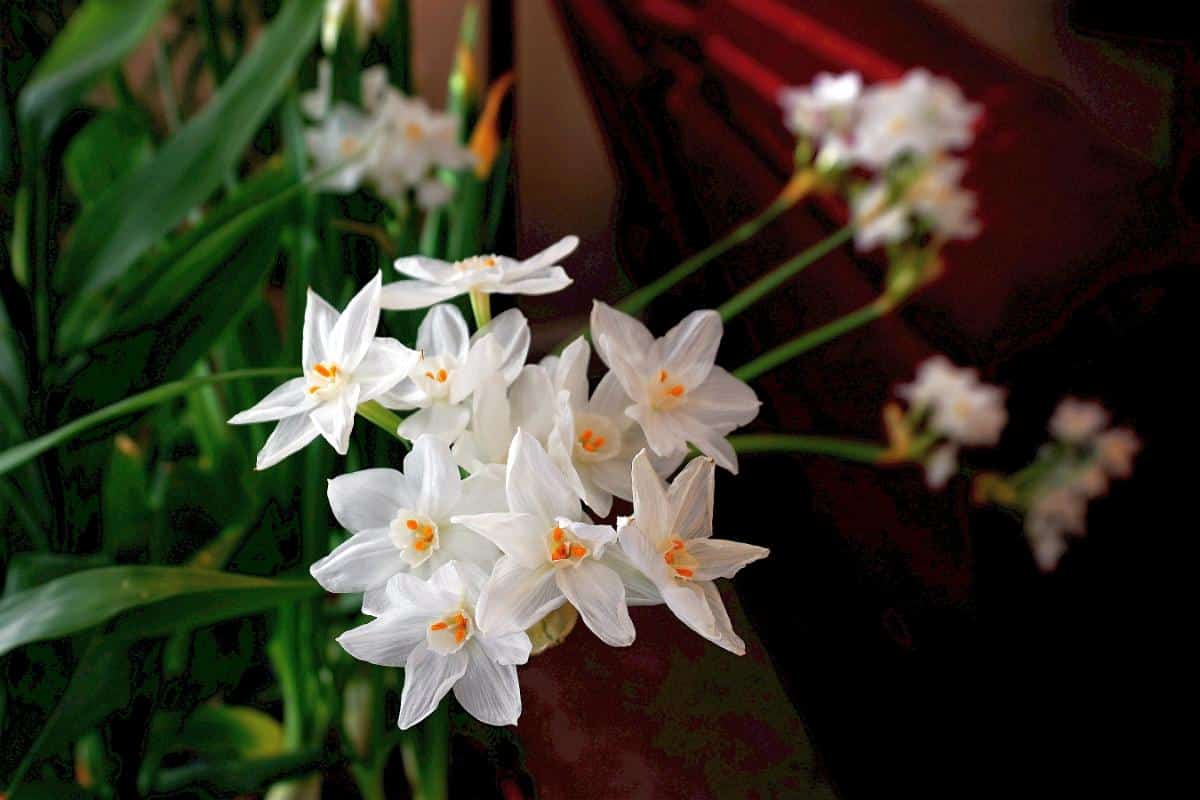
- Paperwhites are smaller but much-loved Christmas flowering bulbs, too
- Paperwhites grow similarly and in about the same bloom time as amaryllis (a little quicker)
- They complement amaryllis nicely, either together in one pot as a holiday bulb garden or set together in separate pots
- If you’re not sure if you have time to get your amaryllis to bloom exactly when you want it to, or if your started bulbs are taking longer to bloom than expected, buy a fully grown plant that is in flower at the time you want it
- You can still save the bulb from flowering full plants after it’s done to regrow for reblooming or to save for next year
Bachelor Party Takes Unexpected Turn When They Hear Dog Barking In The Mud, Leading to an Unforgettable Rescue Mission.
Bachelor parties are a fun way to celebrate the ending of singlehood and the beginning of married life. Some people go absolutely wild in Vegas, some enjoy a quiet celebration with just a few buddies – there are a plethora of ways to have that last ‘huzzah’. Mitch White planned to have a relaxing canoe trip with his closest buddies. The groom-to-be had no idea that this trip would turn into a rescue mission for an elderly dog stuck in the mud. That’s a bachelor party he surely won’t forget.

Image credits: Carver County Sheriff’s Office
One lovely day, Mitch, a young groom-to-be, gathered his closest friends and set out on a canoe trip to celebrate his upcoming marriage. This bachelor party was supposed to be all about nature and bonding. And is there a better way to bond than rescuing a pup together?
Just after the group had lunch and moved on with their journey, Mitch’s nephew, Gaylen Fraenkel, heard a sad barking. They hadn’t encountered anyone, so it was highly unlikely it was some camper’s dog. The young man decided to turn the canoe around to make sure everything was okay. And good thing he did – a desperate dog was stuck in thick mud and using his last bits of strength to call for help.
Upon closer inspection, they saw that the poor fella was an elderly Saint Bernard. He was very thin and exhausted with a nasty tick attached to his eye. The rest of the group turned their canoes around and jumped in to help. The mud was so deep and thick, everyone sunk up to their knees. But they were relentless in their attempt to rescue the dog, using oars as shovels to dig him out.
Mitch White was out on his bachelor party trip with his closest friends. The guys were canoeing when they heard barking

Image credits: WCCO – CBS Minnesota
When they approached the shore they saw a dog asking for help, completely stuck in the mud

Image credits: WCCO – CBS Minnesota
The guys quickly jumped out and started digging him out, using oars as shovels

Image credits: WCCO – CBS Minnesota
To keep the pooch comfortable, they offered him water, of which he drank half a gallon before stopping. The kind guys shared their lunch with him, giving him some lunch meat and summer sausages. This quick snack was supposed to give him an energy boost to get up. The bachelors named him Wilson and called out his new name in an attempt to get him up, but he was too tired, even after the delicious summer sausages.
The group didn’t want to approach Wilson too closely as they didn’t see any collar and weren’t sure if he was friendly. That’s a good practice when dealing with a dog you don’t know.
Alex, one of Mitch’s friends, decided it was time to call for help and dialed up 911. He explained the situation and they dispatched the Carver Fire Department, who came to Wilson’s aid in 20 minutes. They brought a harness that they were able to get under his chest and the fire department men, together with two of Mitch’s friends, pulled Wilson out of his muddy prison. Hurray!

Image credits: WCCO – CBS Minnesota
Thanks to the kindness of the bachelors and help from the local fire department, the adorable pooch was rescued

Image credits: Carver County Sheriff’s Office
After a successful rescue mission, Wilson was in for another pleasant surprise. Five minutes after he was pulled out of the mud, his owner showed up. He was surprised to see his four-legged pal all covered in mud. “Ed! What are you doing down there in the mud?!” he exclaimed at the sight of his dog. That’s how Mitch and his friends found out they’d been calling Ed the wrong name. Although he does look like a Wilson to me.
A couple of days ago, Mitch got a pleasant surprise when a friend of the owners reached out to him. He wanted to let Ed’s saviors know that he was doing much better, recovering nicely and was already moving around on his own. I bet his owners won’t let him out of their sight now.
Ed, a lovely senior Saint Bernard, was reunited with his owner and is feeling much better

Image credits: WCCO – CBS Minnesota
Adorable Ed was clearly born under a lucky star. Mitch’s party found him just in time to get him to safety. But what if they hadn’t found him?
Owners want the best for their dogs – the best treats, loads of toys and freedom to roam and explore. Unfortunately, letting your dog off the leash can be very dangerous as they can get lost like poor Ed here. They might decide to snack on something dangerous that can result in a stack of medical bills and a long and painful recovery. Keep an eye on your pet to avoid injuries or some malicious person trying to steal your beloved pooch.
Walks with their human are the highlight of any dog’s day and they look forward to it. It’s that one time of the day when they have your undivided attention and love, so try to make the best out of it. Avoid going on your phone or listening to music; instead, try talking to your dog and watch their face light up when you say, ‘hey buddy!’. The more fun activities you do, the stronger the bond you create with your pooch. Look into those eyes and remember that you are everything to them, so make the most of the short time you have together.
People in the comments praised the bachelors for their act of kindness
















Leave a Reply